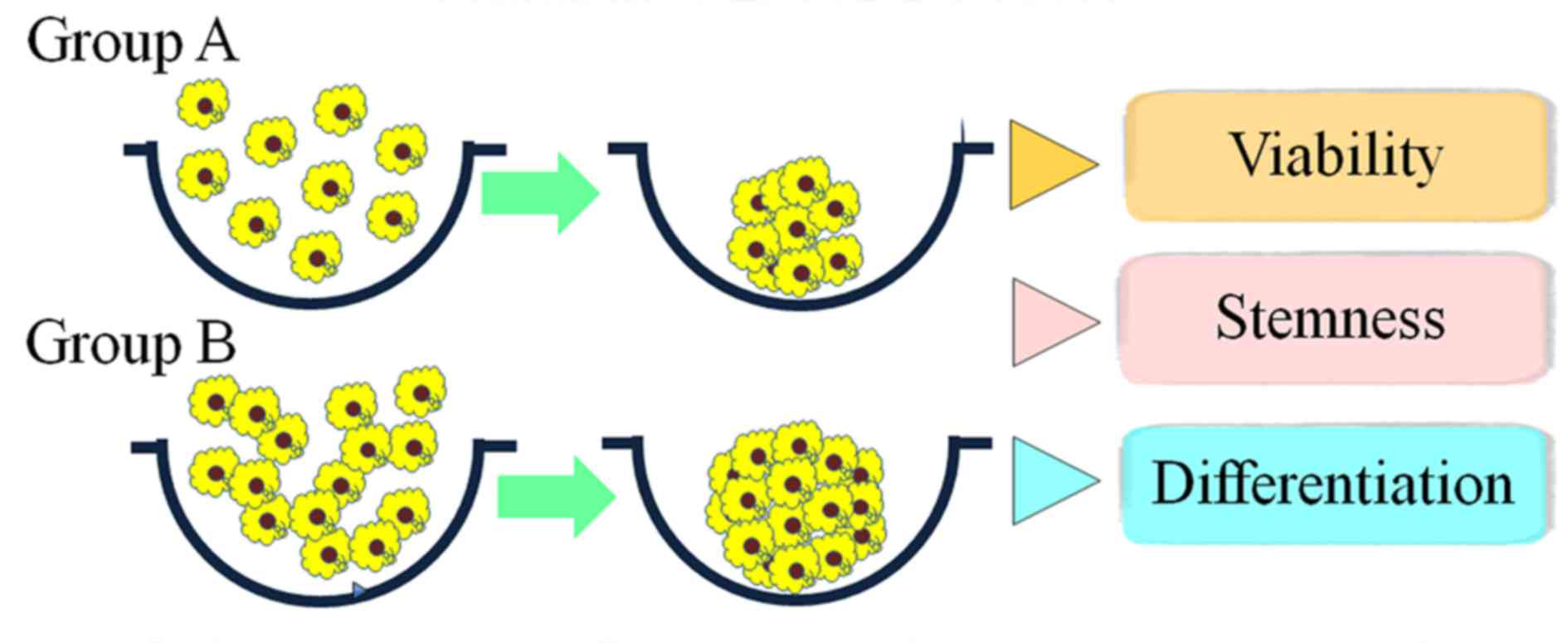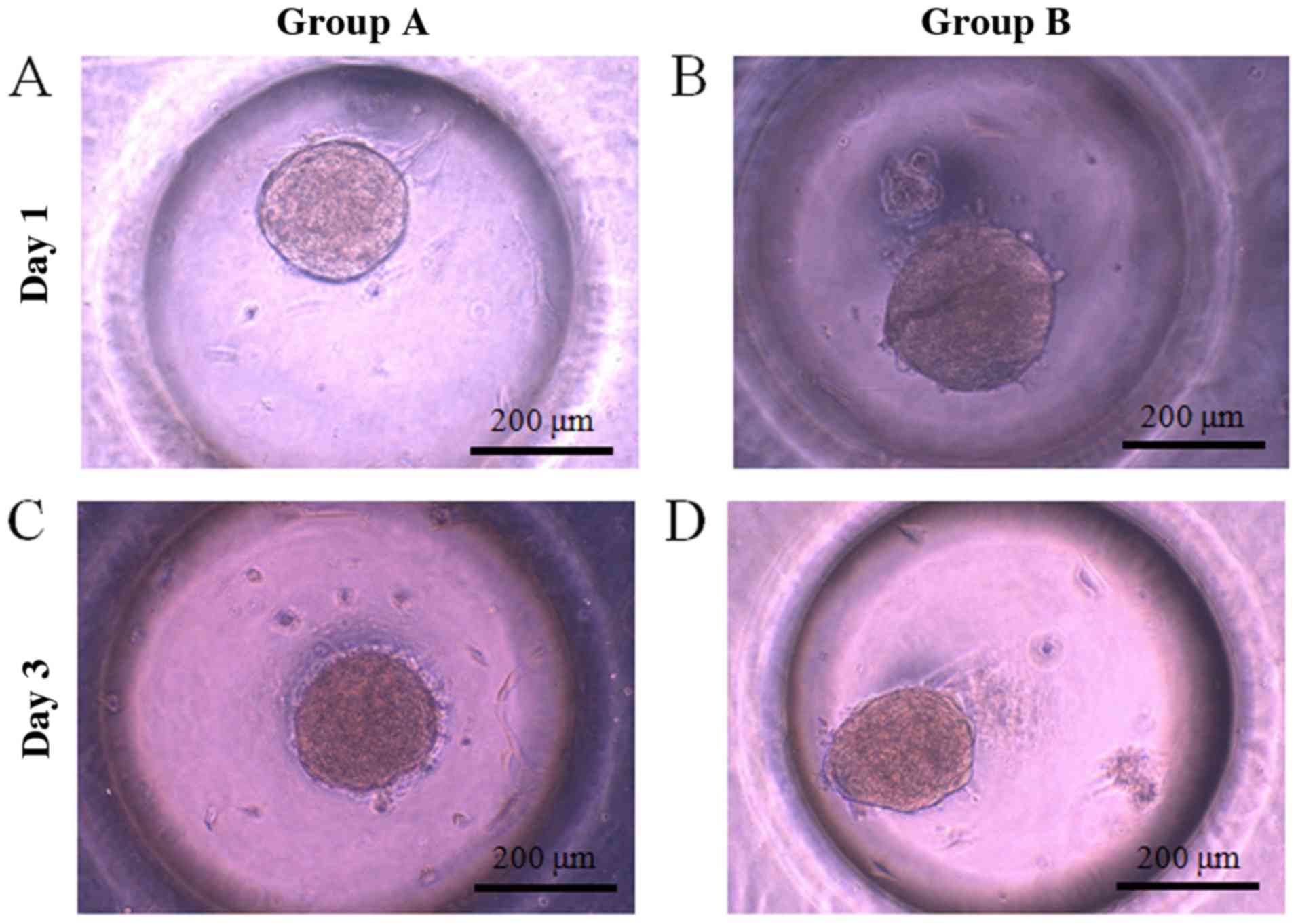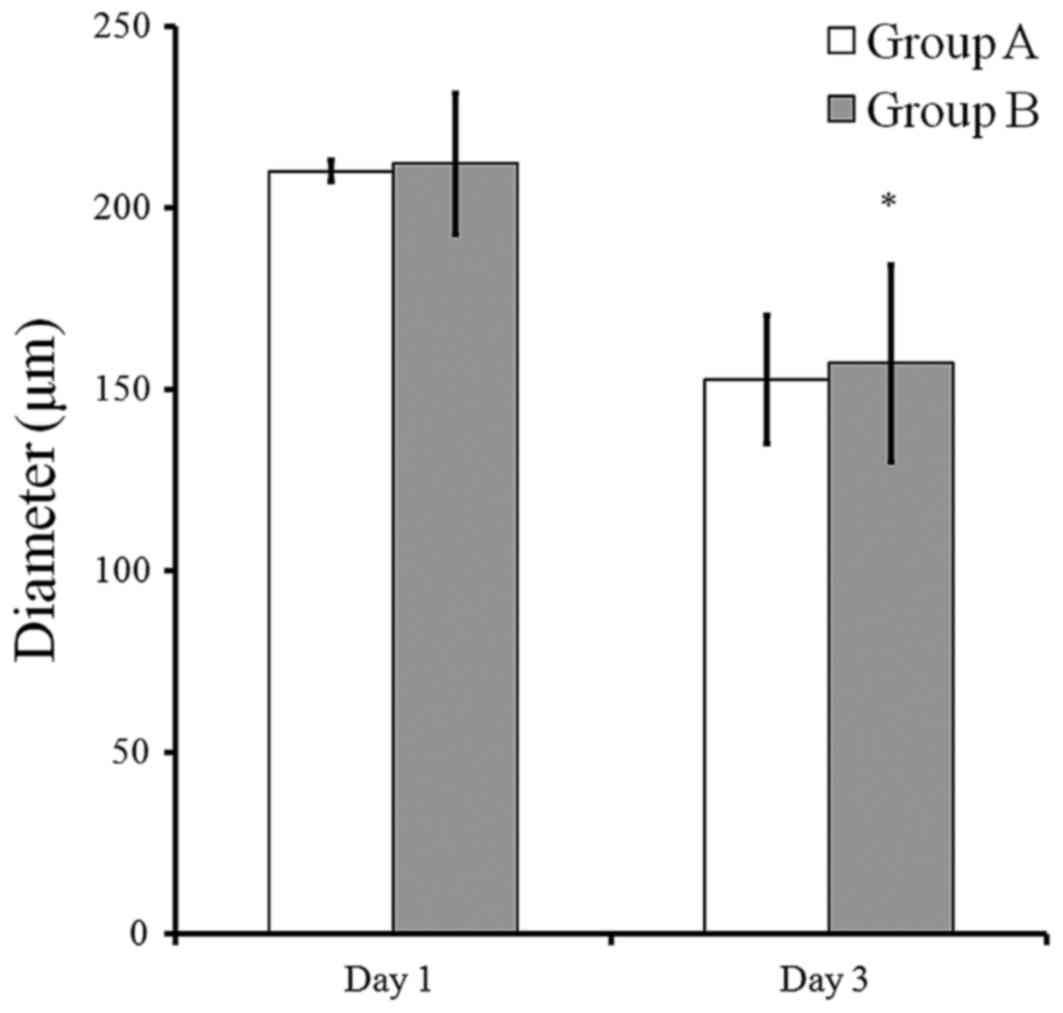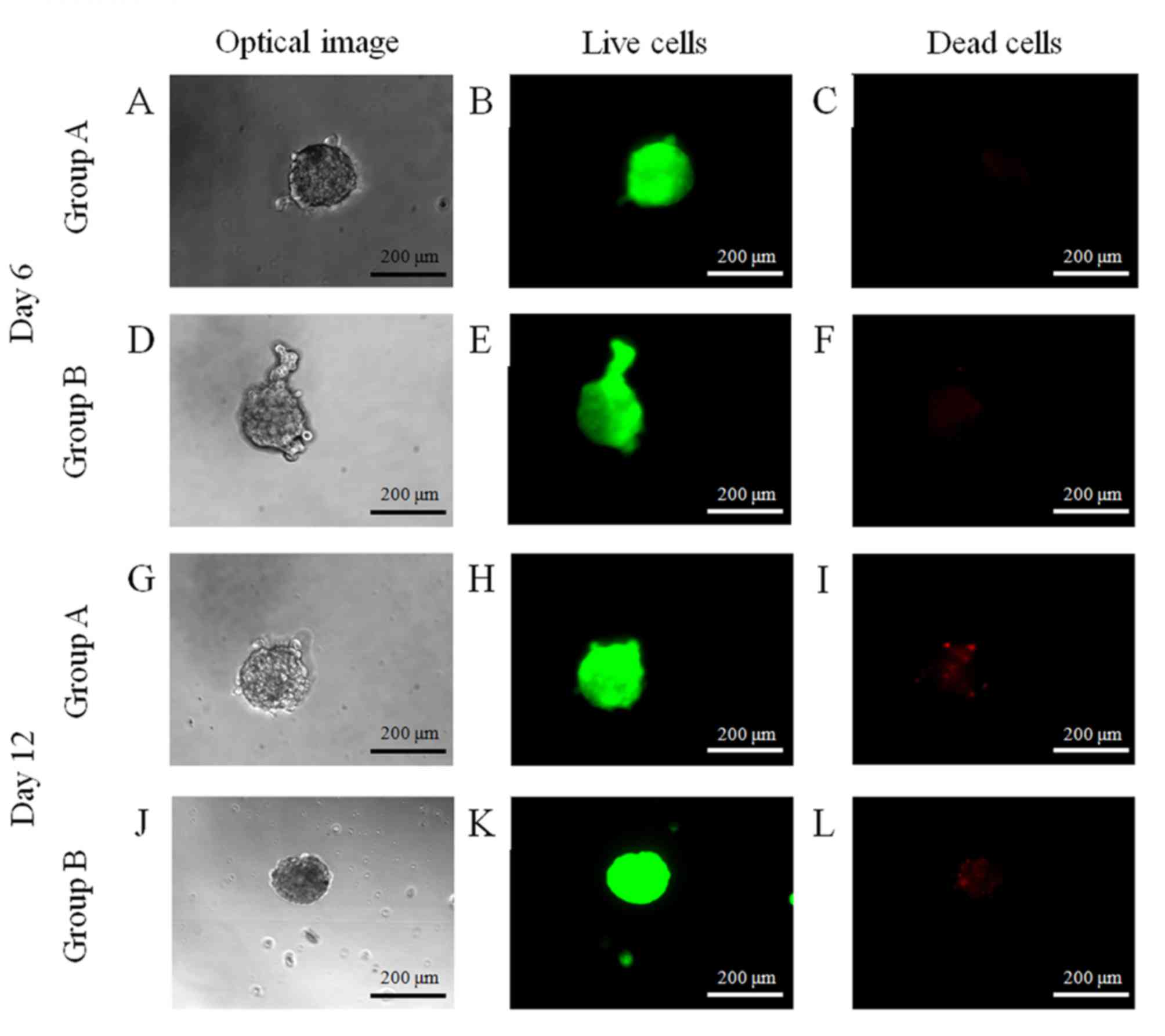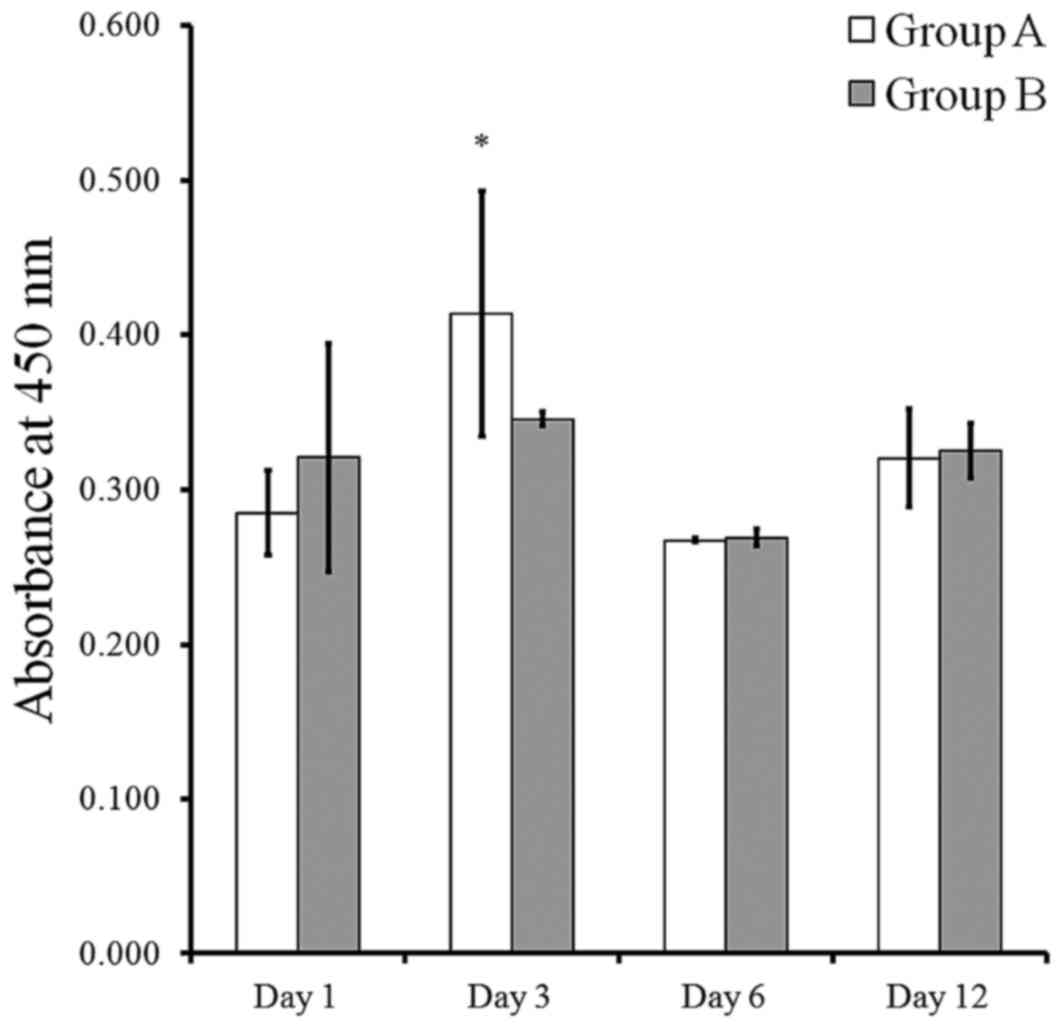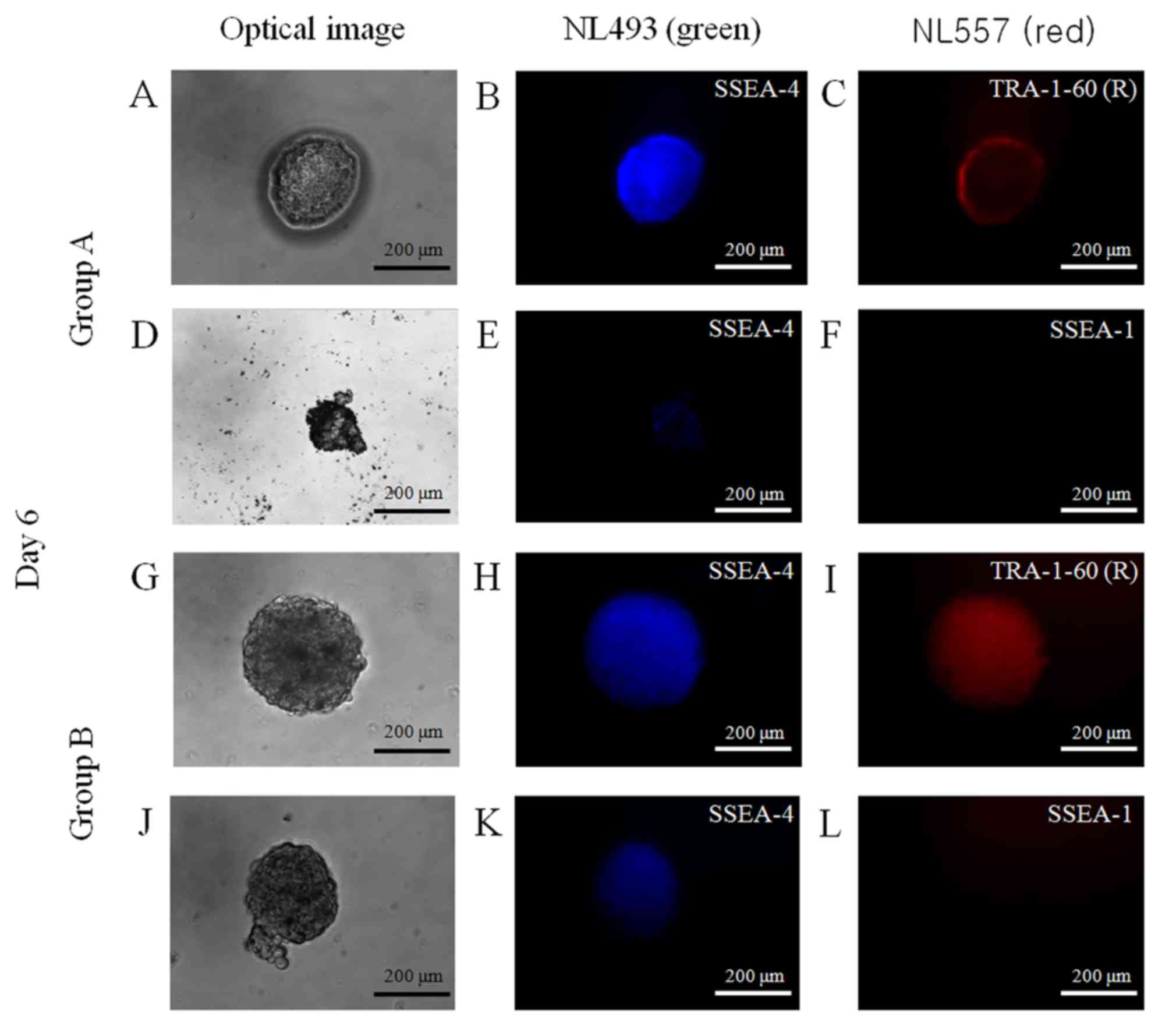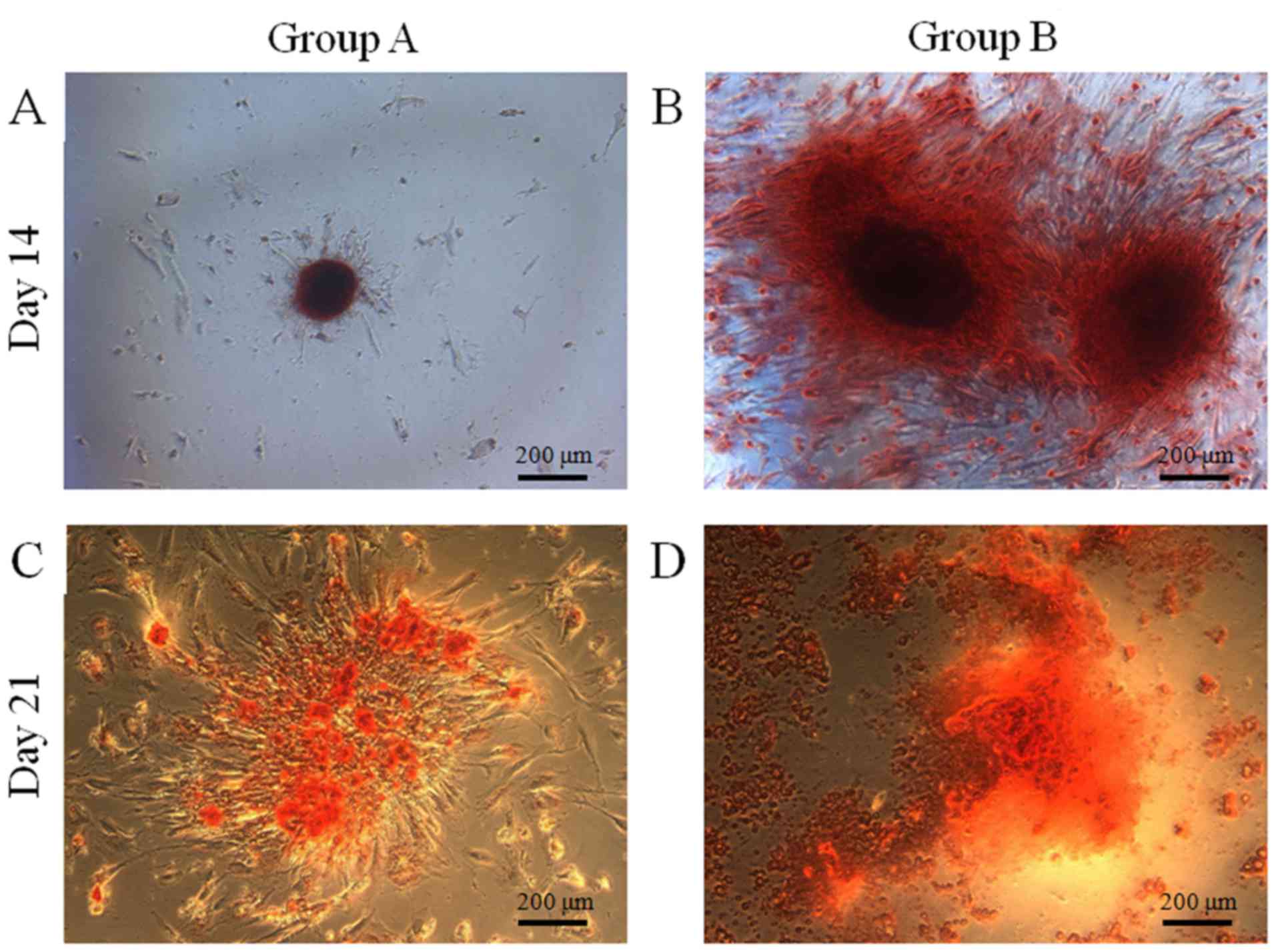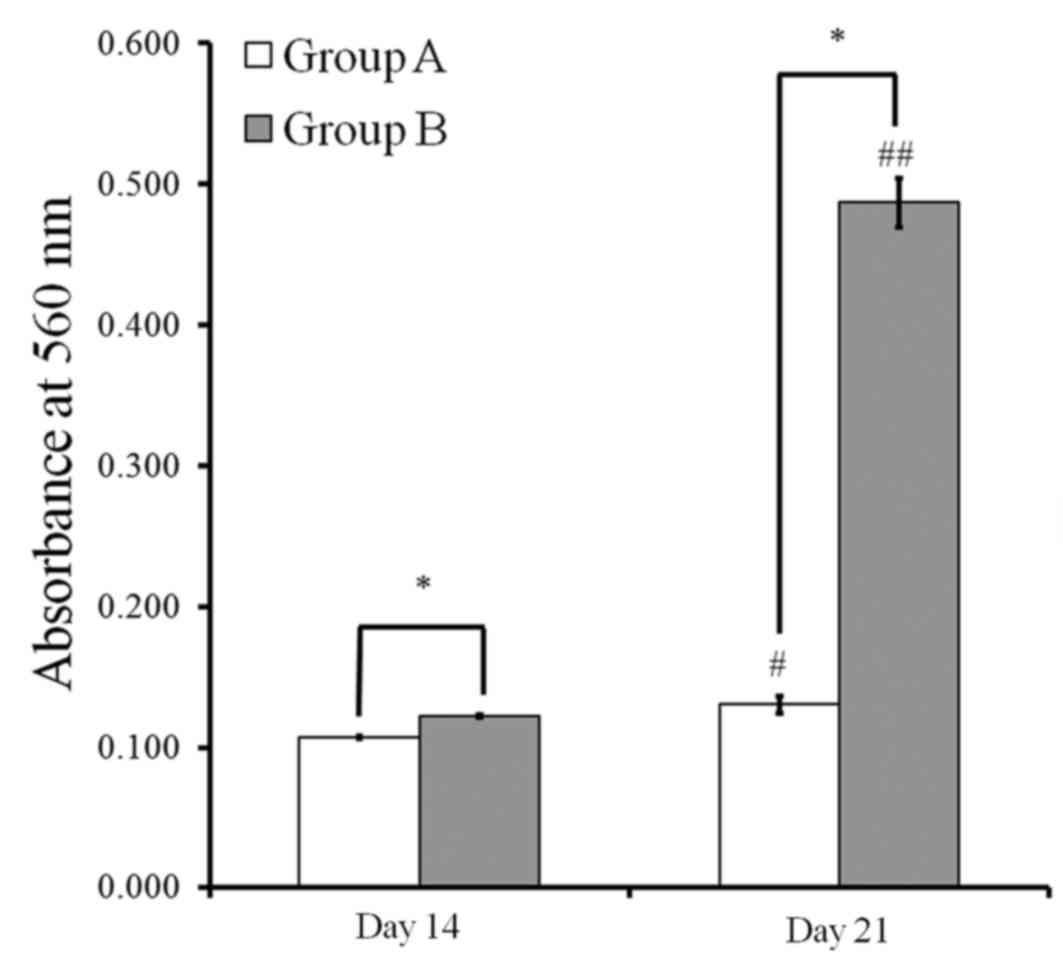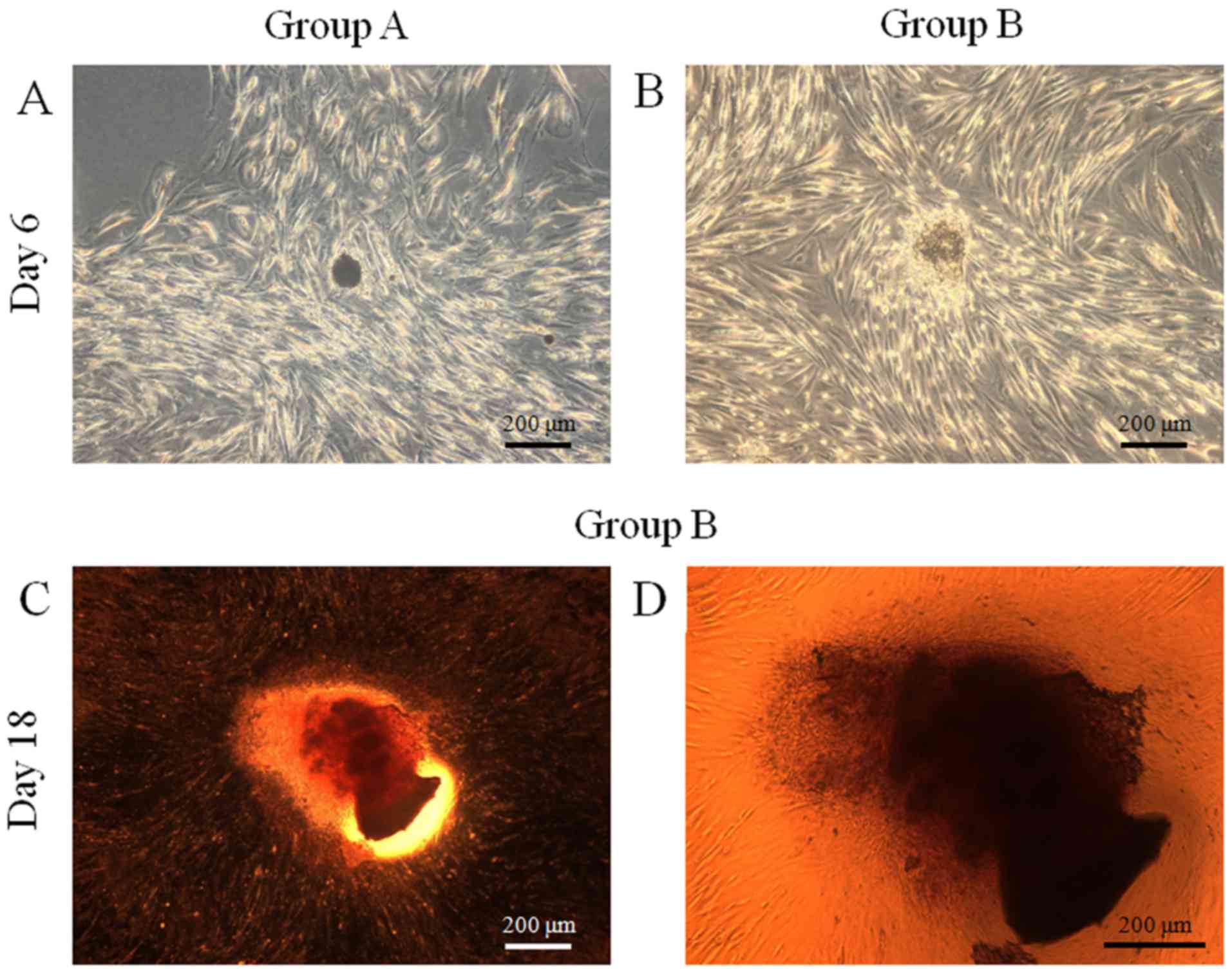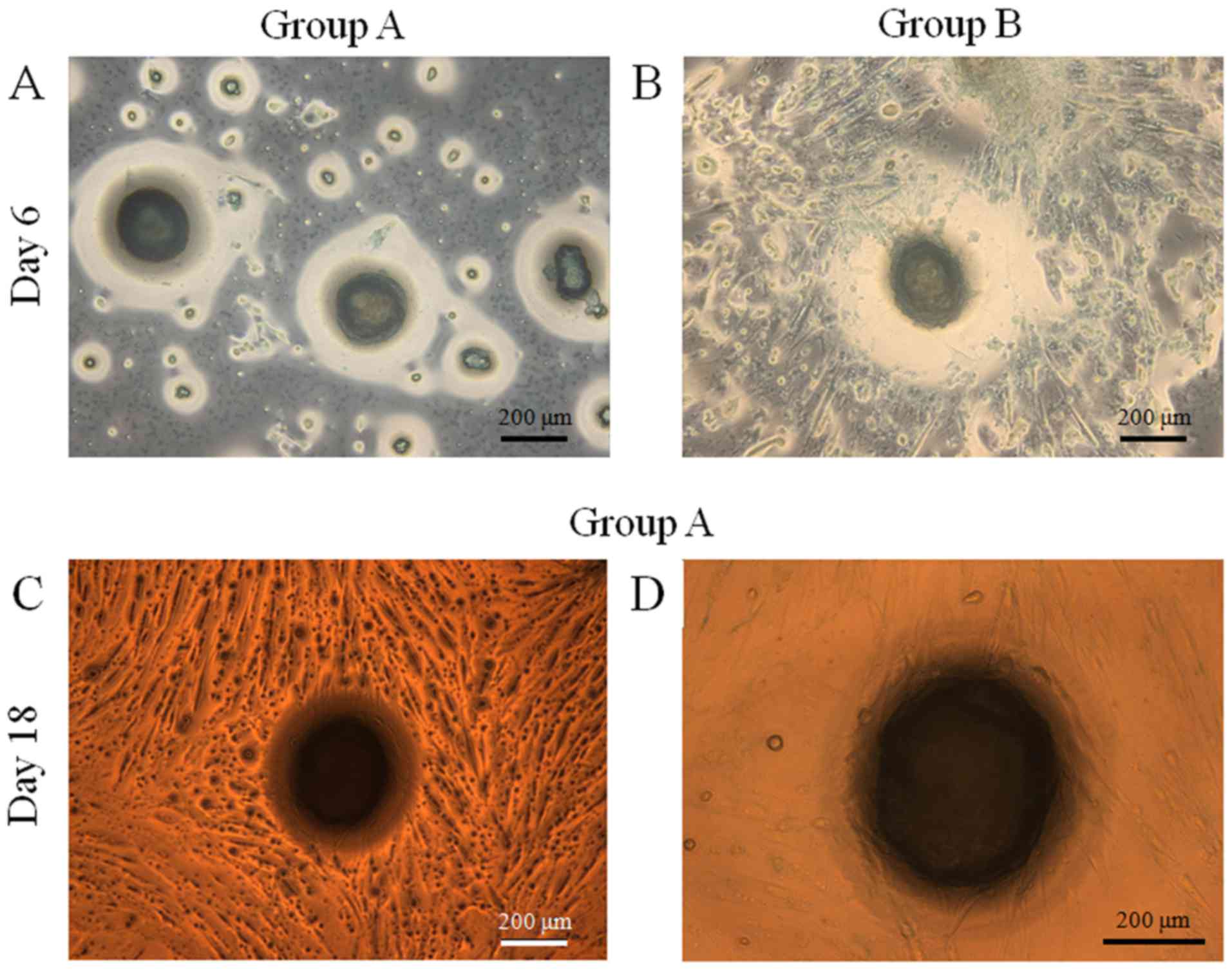|
1
|
Park JB, Bae SS, Lee PW, Lee W, Park YH,
Kim H, Lee K and Kim I: Comparison of stem cells derived from
periosteum and bone marrow of jaw bone and long bone in rabbit
models. Tissue Eng Regen Med. 9:224–230. 2012. View Article : Google Scholar
|
|
2
|
Park JB, Lee KS, Lee W, Kim HS, Lee KH and
Kim IS: Establishment of the chronic bone defect model in
experimental model mandible and evaluation of the efficacy of the
mesenchymal stem cells in enhancing bone regeneration. Tissue Eng
Regen Med. 10:18–24. 2013. View Article : Google Scholar
|
|
3
|
Li Y, Guo G, Li L, Chen F, Bao J, Shi YJ
and Bu H: Three-dimensional spheroid culture of human umbilical
cord mesenchymal stem cells promotes cell yield and stemness
maintenance. Cell Tissue Res. 360:297–307. 2015. View Article : Google Scholar : PubMed/NCBI
|
|
4
|
Zhang S, Liu P, Chen L, Wang Y, Wang Z and
Zhang B: The effects of spheroid formation of adipose-derived stem
cells in a microgravity bioreactor on stemness properties and
therapeutic potential. Biomaterials. 41:15–25. 2015. View Article : Google Scholar : PubMed/NCBI
|
|
5
|
Hsiao C, Tomai M, Glynn J and Palecek SP:
Effects of 3D microwell culture on initial fate specification in
human embryonic stem cells. AIChE J. 60:1225–1235. 2014. View Article : Google Scholar : PubMed/NCBI
|
|
6
|
Jiang CF, Hsu SH, Tsai KP and Tsai MH:
Segmentation and tracking of stem cells in time lapse microscopy to
quantify dynamic behavioral changes during spheroid formation.
Cytometry A. 87:491–502. 2015. View Article : Google Scholar : PubMed/NCBI
|
|
7
|
Li H, Dai Y, Shu J, Yu R, Guo Y and Chen
J: Spheroid cultures promote the stemness of corneal stromal cells.
Tissue Cell. 47:39–48. 2015. View Article : Google Scholar : PubMed/NCBI
|
|
8
|
Jin SH, Lee JE, Yun JH, Kim I, Ko Y and
Park JB: Isolation and characterization of human mesenchymal stem
cells from gingival connective tissue. J Periodontal Res.
50:461–467. 2015. View Article : Google Scholar : PubMed/NCBI
|
|
9
|
Jin SH, Kweon H, Park JB and Kim CH: The
effects of tetracycline-loaded silk fibroin membrane on
proliferation and osteogenic potential of mesenchymal stem cells. J
Surg Res. 192:e1–e9. 2014. View Article : Google Scholar : PubMed/NCBI
|
|
10
|
Park JB, Kim YS, Lee G, Yun BG and Kim CH:
The effect of surface treatment of titanium with
sand-blasting/acid-etching or hydroxyapatite-coating and
application of bone morphogenetic protein-2 on attachment,
proliferation, and differentiation of stem cells derived from
buccal fat pad. Tissue Eng Regen Med. 10:115–121. 2013. View Article : Google Scholar
|
|
11
|
Mehta G, Hsiao AY, Ingram M, Luker GD and
Takayama S: Opportunities and challenges for use of tumor spheroids
as models to test drug delivery and efficacy. J Control Release.
164:192–204. 2012. View Article : Google Scholar : PubMed/NCBI
|
|
12
|
Page H, Flood P and Reynaud EG:
Three-dimensional tissue cultures: Current trends and beyond. Cell
Tissue Res. 352:123–131. 2013. View Article : Google Scholar : PubMed/NCBI
|
|
13
|
Hsiao C and Palecek SP: Microwell
regulation of pluripotent stem cell self-renewal and
differentiation. Bionanoscience. 2:266–276. 2012. View Article : Google Scholar : PubMed/NCBI
|
|
14
|
Lee SI, Yeo SI, Kim BB, Ko Y and Park JB:
Formation of size-controllable spheroids using gingiva-derived stem
cells and concave microwells: Morphology and viability tests.
Biomed Rep. 4:97–101. 2016.PubMed/NCBI
|
|
15
|
Azarin SM, Larson EA, Almodovar-Cruz JM,
de Pablo JJ and Palecek SP: Effects of 3D microwell culture on
growth kinetics and metabolism of human embryonic stem cells.
Biotechnol Appl Biochem. 59:88–96. 2012. View Article : Google Scholar : PubMed/NCBI
|
|
16
|
Gattazzo F, Urciuolo A and Bonaldo P:
Extracellular matrix: A dynamic microenvironment for stem cell
niche. Biochim Biophys Acta. 1840:2506–2519. 2014. View Article : Google Scholar : PubMed/NCBI
|
|
17
|
Wan PX, Wang BW and Wang ZC: Importance of
the stem cell microenvironment for ophthalmological cell-based
therapy. World J Stem Cells. 7:448–460. 2015. View Article : Google Scholar : PubMed/NCBI
|
|
18
|
Hsu SH, Huang GS, Lin SY, Feng F, Ho TT
and Liao YC: Enhanced chondrogenic differentiation potential of
human gingival fibroblasts by spheroid formation on chitosan
membranes. Tissue Eng Part A. 18:67–79. 2012. View Article : Google Scholar : PubMed/NCBI
|















